Chihuahua color variations
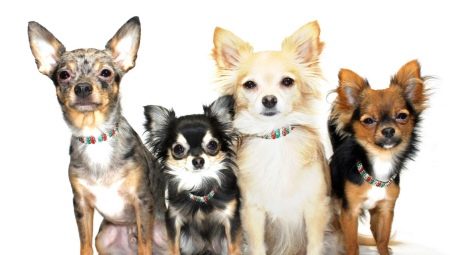
A distinctive feature of such a dog breed as a Chihuahua lies in the fact that these cute pets sometimes amaze even specialists with the variety of their color. Surely no other dog breed has such an extensive and rich palette of colors as the mischievous Chihuahua, which, by the way, guarantees the high uniqueness and sometimes even the originality of any dog.
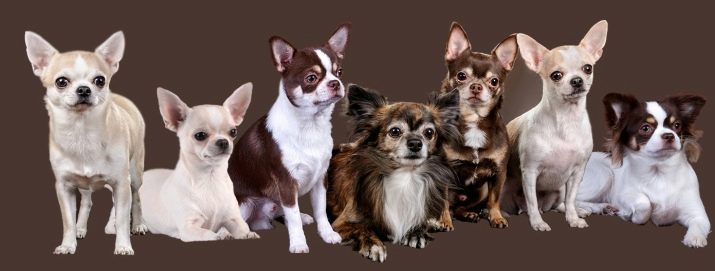
Popular colors
Few of the common people know that the Chihuahua is one of the most ancient known breeds. It was actively withdrawn for their own protection by many Eastern emperors. The rulers always wore these little animals in the wide sleeves of their clothes and, completely relying on their small "guards", did not at all fear for their safety. As soon as a threat appeared, they threw the dog out of their wide sleeve. This kind of surprise effect confused the enemy, which made it possible to quickly capture him.
There are different types of color markings for this sought-after breed.All the colors described below can be found both in dogs with long hair and in individuals with short hair. The marking itself is a characteristic color combination that gives a certain pattern to the dog's coat.
- Pure or solid color. The color of the coat will not really matter here, since the dog can be 100% snow-white and completely brown, as well as completely chocolate or black. Not very large white spots on the breast or toes are allowed. At the same time, the main color should be at least 95% of the pet's body.

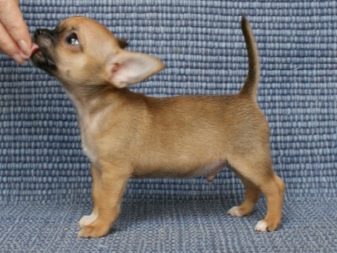
- Two-tone color (spotted). This kind of color can be composed of two different pure shades. This tonal combination can look like this: black with snow-white color, catchy chocolate with white, whitish with brownish-red, black with rich golden. In this case, the main color will occupy a large area of the body of your pet, or it will be evenly distributed along with other colors.
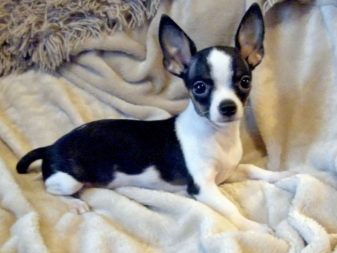
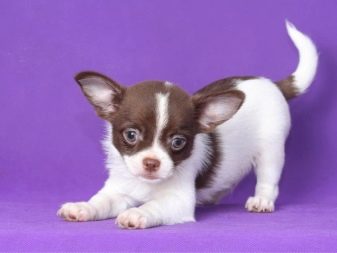
- Tricolor. In this case, the dog's coat consists of three colors, while the third color will most often act as a tone rather close to the main one - this is called "tan". But sometimes you can find a pronounced flavor. The most common color for tricolor dogs is black and white with noticeable tan markings, but other exotic varieties can also be found. For example, chocolate tan with a white color.
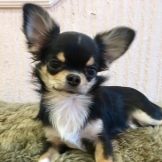
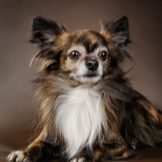
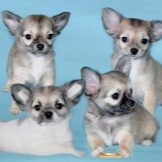

To determine the color of a Chihuahua, you need to know that the color of the nose, the color of the ears, the tone of the pads and the paws themselves, eyelids, eyes, and even claws will be of great importance in this matter, and in addition, the percentage of distribution of the main pigment along the length of the hair hair. In many cases, the background color of the dog's coat will be white.
Here is a list of the most common breed colors.
Ginger
In the natural environment, in the Chihuahua breed, an absolutely pure color of reddish-golden color is extremely rare. At the same time, breeders allow the color of the coat from faded red to rich darkish orange. Very often there is a combination of red with a whitish color, while white blotches are most often seen on the chest, on the head and legs, and also on the tail of the dog. The red color is considered one of the most demanded among the owners of the breed.
And you can also find other options: sable color with a whitish color, reddish-black color, reddish-sable color and reddish-brown color are in great demand.
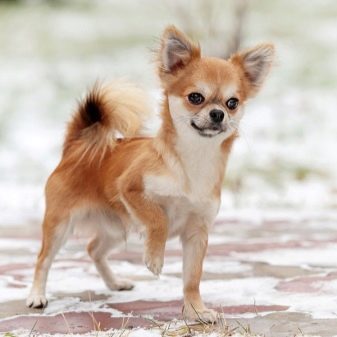
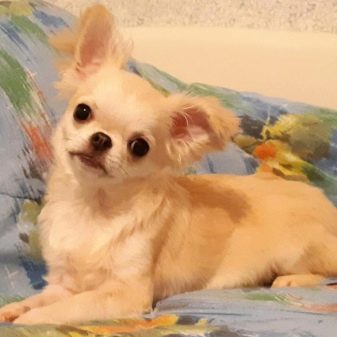
Black
It is quite difficult today to find a 100% black color in the Chihuahua breed. Colored inserts appear on the chest, often visible on the pet's head, paws and tail. The black color with a reddish tan, as well as with a tan of a reddish or light tone, looks very spectacular. This kind of color is often called differently, but it is recognized by experts as a black and tan color. Milk spots are also present on the dog's torso (most often on the breast). But snow-white golfs of the same color can also be, but much less often. This shade is absolutely not like a discarded Merle.
The main color here will be black. And in the role of tan will be reddish or red. You can also find a tricolor: catchy black, along with it one of the types of beautiful tan and whitish spots.
You can find much more unusual options: beautiful black-brindle color, catchy blackish-brown color, unique black fawn color, graceful black and red, classic black and white.
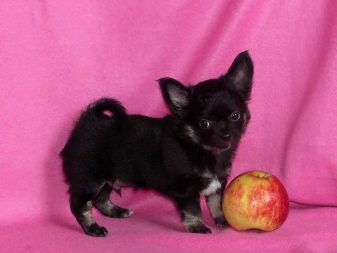
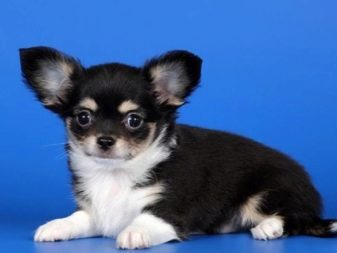
Cream
It is also not very common. The color of the coat ranges from ivory, which is almost invisible to the eye, to a light beige tone. This color is quite delicate and completely without contrast. Sometimes, along with it, a white color is noticeable on the breast, as well as on the legs and tail.This color is often confused with fawn, but the latter must necessarily contain a small darkened mask on the dog's face, sometimes poorly expressed, sometimes immediately noticeable.
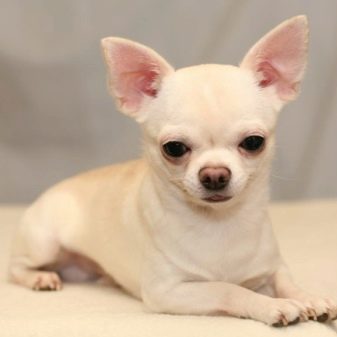
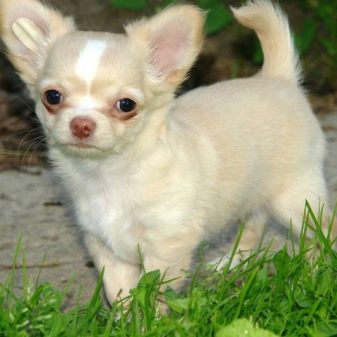
Rare colors
To the rather rare colors of the Chihuahua, one can undoubtedly include a chocolate shade, a whitish color and the rarest brindle, lilac (almost lilac) and blue colors. Moreover, all of them, like the above-mentioned colors that often catch the eye, can have an unimaginably large number of combinations.
Let's consider the most famous of them.
Snow white (white)
Completely snow-white colors are very rare in Chihuahuas. Just amazingly beautiful white color will look with a contrasting type of color: black or reddish, tiger or chocolate, golden or brown. But it will also be in perfect harmony with a cream tone or blue, sable or fawn.
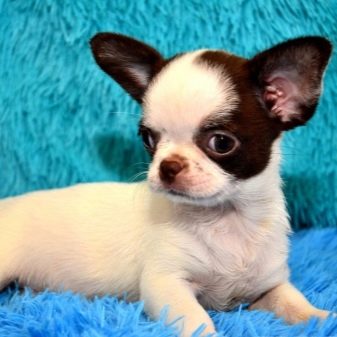
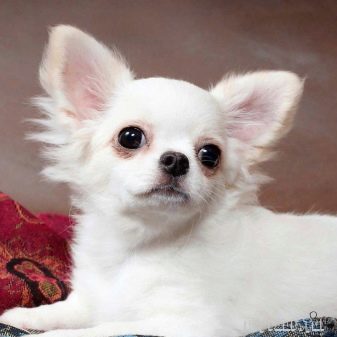
Chocolate
A completely chocolate color is simply impossible to find. Outwardly, it is very similar to brown, but with a special soft reddish tint of the coat, which is more conspicuous in excellent lighting. In addition, the shade of the pads and nose should match the main color - rich chocolate. The eyes will have a brown undertone.
Chocolate color quite often can be accompanied by small whitish blotches on the breast and legs. And also sometimes you can notice the tan. Chocolate with a blue color will look especially stylish.
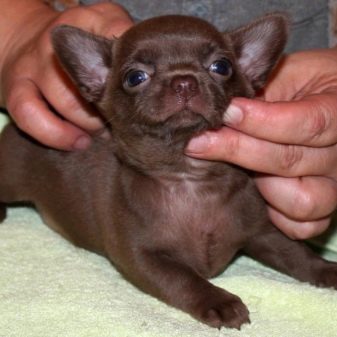
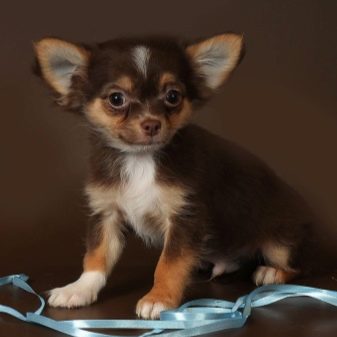
Blue
If you take a good look at this dog, then its coat will rather have a silvery-grayish tint. But in the light of the sun, the wool begins to visually cast a smoky blue tone. In this case, the very gradient of wool can be from the darkest gray to smoky colors. This kind of color feature is explained by the presence of a blue gene in the blood of an individual.
Available varieties: whitish with blue, blue fawn, blue-tan, blue sable, blue-brindle. All of them are considered extremely rare.
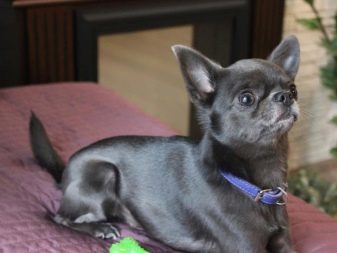
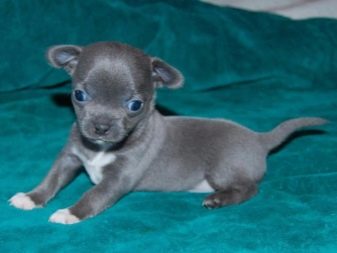
Tiger
One of the rarest and most demanded colors for many fans of the Chihuahua breed. Tiger color is a catchy pattern of different spots and stripes that contrast with the basic tone of the coat, which ultimately resembles a bright tiger skin. These dogs look very impressive.
Available types of this color: brindle with white and brindle with blue, brownish brindle and black brindle, brindle fawn and chocolate brindle tan.
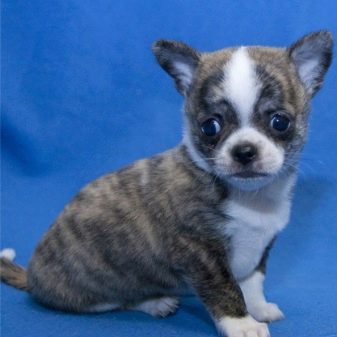
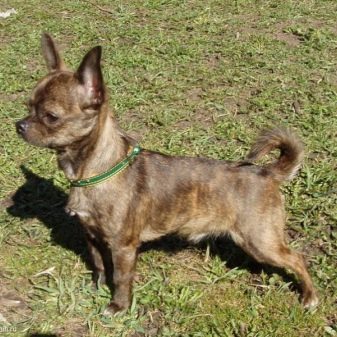
Lilac
A very beautiful species of Chihuahua. This color looks most impressive on pets with long hair. The color saturation of the coat can be from the lightest lilac to dark lilac. This color is most often complemented by whitish spots on the chest and on the toes. But the presence of white spots on the back and on the sides of the body is excluded. Sometimes you can find a lilac tricolor.

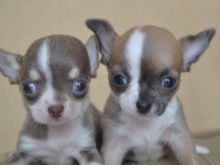
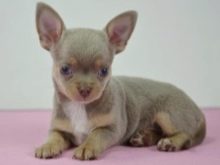
Merle
The Merle color (also called the Marble) looks quite expressive and catchy, but it is strictly forbidden among Chihuahua breeders. The color is expressed by not very uniform pigmentation of the coat, on which there are spots of dark gray or, in general, beige. The eyes are usually light blue or dark blue. Such deviations are caused by the predominance of the "M" gene.
Merle puppies are often born either blind or deaf. There are other problems that may well manifest themselves in the already quite adult age of the pet.
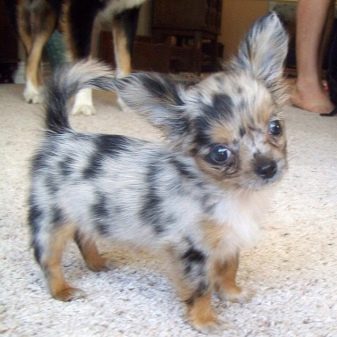
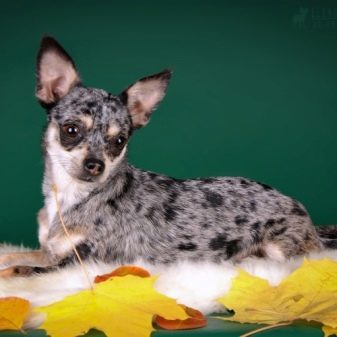
Changing color saturation
Quite often, there is a change in the saturation of the color of the coat in a breed such as a Chihuahua. Usually, this kind of phenomenon can be observed in puppies up to 1 year old, when pigmentation of the coat is just beginning to appear in them, and this pigment begins to be distributed evenly over the hairs. Color saturation sometimes decreases or increases - that is, it changes with age. For example, a fawn color can lighten to a faded beige or, conversely, intensify to a catchy golden-red.
It is rather difficult to predict in which direction the changes will go, but they most often occur in puppies with light coat colors.
There may be significant deviations in the color of the coat in adult pets - if they have a significant lesion of the central nervous system, if any organs have suffered, sometimes everything happens for an unknown reason. Many experts assure that a color change can even occur from a change in feed. And at the age of 8-10 years, you can observe a slight appearance on the body and muzzle of a pet of gray hair, which will be especially noticeable in bright sunlight.
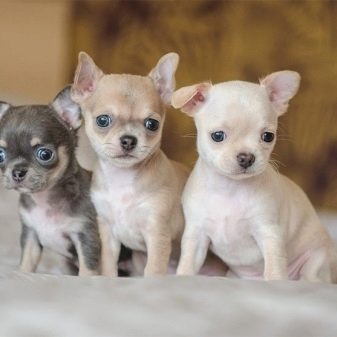
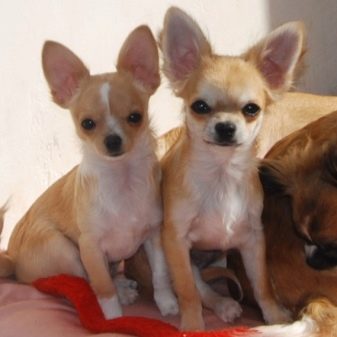
How to choose a puppy?
The acquisition of a puppy of any color (only Merle should be avoided) is carried out while he is not yet three months old. The place of purchase will play a huge role. If this is a specialized kennel, be sure to check all the documents that the puppy should have, the presence of all vaccinations, it is better to immediately find out the pedigree of his parents. However, in this case, the price of puppies will be quite high.
In principle, you can buy a thoroughbred puppy from your friends or take it from unfamiliar hands, but again - if you have all the documents. Just ask the seller to show you the veterinary passport of the parents of your future pet (there will be indicated all the diseases that the female or male has suffered). Remember that all diseases in Chihuahuas will be inherited.
Even if you really like a Merle puppy - refuse such a dubious purchase. But do not confuse the usual stains with the Merle colors, for this, check out the possible colors of the breed in advance. Blotches of whitish or black colors will not be a pathology or defect.
Only real documents that confirm the breed will be able to protect you from future disappointments.
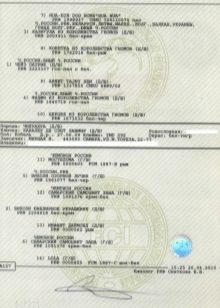
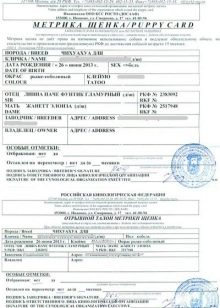

For the different colors of the Chihuahua, see the video below.






































